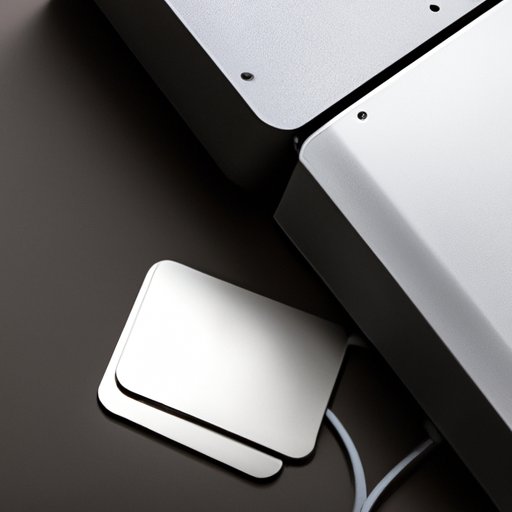Introduction
As a Mac user, you know how frustrating it can be to have a computer that runs slowly due to a lack of space. It’s important to regularly free up space on your Mac to ensure it’s running efficiently. This article will provide you with ten simple tips, explain how to use built-in storage management tools, offer strategies for organizing photos, and suggest the benefits of investing in an external hard drive. Let’s get started!
10 Simple Tips to Free Up Space on Your Mac
1. Remove unnecessary files: Go through your files and delete anything you no longer need or use regularly.
2. Clear cache and temporary files: Use a cleaning app to quickly clear out temporary files, cache, and other unnecessary system clutter.
3. Uninstall applications you don’t use: Go through your applications and remove any that you don’t use or need anymore.
4. Delete old email attachments: Clear out old email attachments to free up space in your mailbox and on your computer.
5. Remove old iOS backups: Go through your iTunes backups and delete any old iOS backups that you no longer need.
6. Disable automatic downloads: Turn off automatic downloads in iTunes and App Store settings to prevent unwanted files from taking up space on your computer.
7. Store files in the cloud: Use cloud storage options like iCloud, Google Drive, or Dropbox to store files instead of on your computer.
8. Move large files to external storage: Move large files like videos or high-resolution images to an external hard drive to free up space on your computer.
9. Empty the trash regularly: Empty the trash bin regularly to ensure files are permanently removed from your computer.
10. Turn off Time Machine backups: Turn off Time Machine backups temporarily to free up space until you’re ready to back up your computer again.
How to Use Mac’s Built-In Storage Management Tools
Mac’s built-in storage management tools can help you identify which files are taking up the most space and remove them effortlessly.
To access these tools:
- Click on the Apple icon in the top left corner of your screen and select “About This Mac.”
- Select “Storage” and then click “Manage.”
Here are a few of Mac’s most useful storage management tools:
- Reduce Clutter: This tool scans your computer and quickly removes unnecessary files like caches, logs, and temporary files.
- Optimize Storage: This tool moves files that you don’t use regularly to iCloud while keeping small versions of them on your computer.
- Empty Trash Automatically: This tool permanently deletes files that have been in the trash for more than 30 days, making sure they don’t take up unnecessary space on your computer.
Are Your Photos Taking Up Too Much Space? Here’s What to Do
If you’re a photographer, your photos may be taking up a large chunk of space on your computer. However, there are several photo organization strategies you can use to free up space:
- Use Smart Albums: Smart albums are a photo management tool that organizes images by specific criteria, so you don’t have to do it manually.
- Delete blurry or duplicate photos: Go through your photos and delete any duplicates or blurry photos you don’t need.
- Store photos in the cloud: Consider using a cloud service like Google Photos or iCloud to store your photos instead of on your computer to free up space.
- Utilize External Hard Drives: Move large photo libraries to an external hard drive for additional storage space.
The Beginner’s Guide to Using External Hard Drives for More Space
External hard drives are an essential tool for additional storage space. Here’s how to use external hard drives with your Mac.
- Purchase an External Hard Drive: Do your research and decide which external hard drive will work best for you.
- Connect the Hard Drive: Connect your external hard drive to your computer using a USB port.
- Format the Drive: To use the external hard drive with your Mac, you’ll first need to format it. Go to “Disk Utility” and select the hard drive. Click on “Erase” and select a format that’s compatible with your Mac.
- Transfer Data to the Hard Drive: Move files from your computer to the hard drive.
Quick Fixes When You Need Space Now
When you need more space quickly, there are several quick fixes you can try:
- Store files in the cloud: Move files to cloud storage like iCloud or Dropbox to free up space on your computer.
- Clear cache files: Use a cleaning app to clear cache files, temporary files, and other system clutter.
- Delete unnecessary files: Go through your files and delete anything you don’t need or use regularly.
- Reduce the size of files: Use a file compression tool to reduce the size of large files.
- Remove large applications: Remove large applications that you don’t use or need anymore.
Conclusion
Freeing up space on your Mac is a necessary task to keep your computer running at peak performance. By using the tips, tools, and tricks listed in this article, you’ll be able to free up space on your Mac before it’s too late. Remember, regularly maintaining your Mac’s storage space will not only keep your computer running smoothly but also extend its lifespan.
